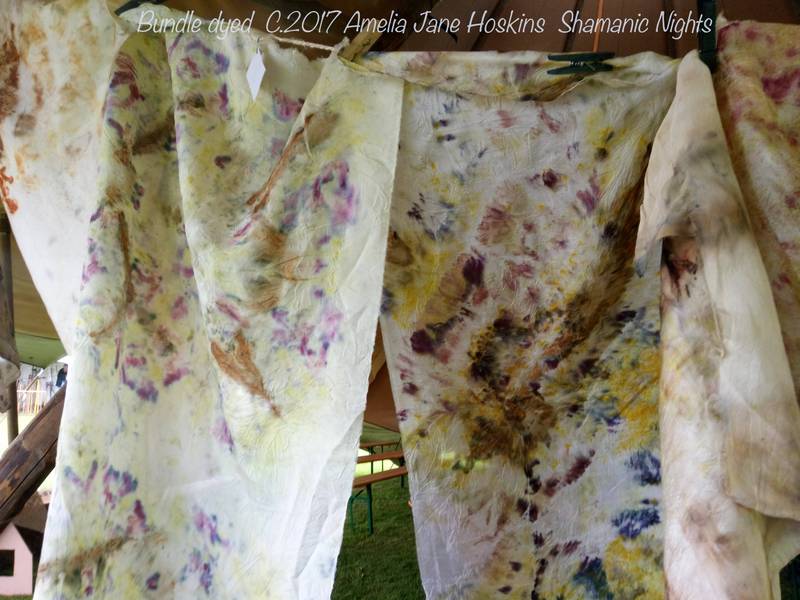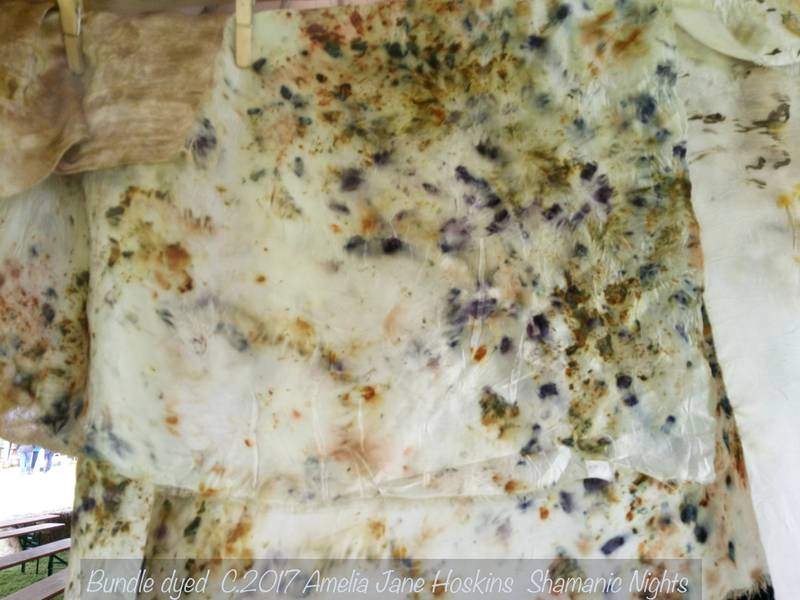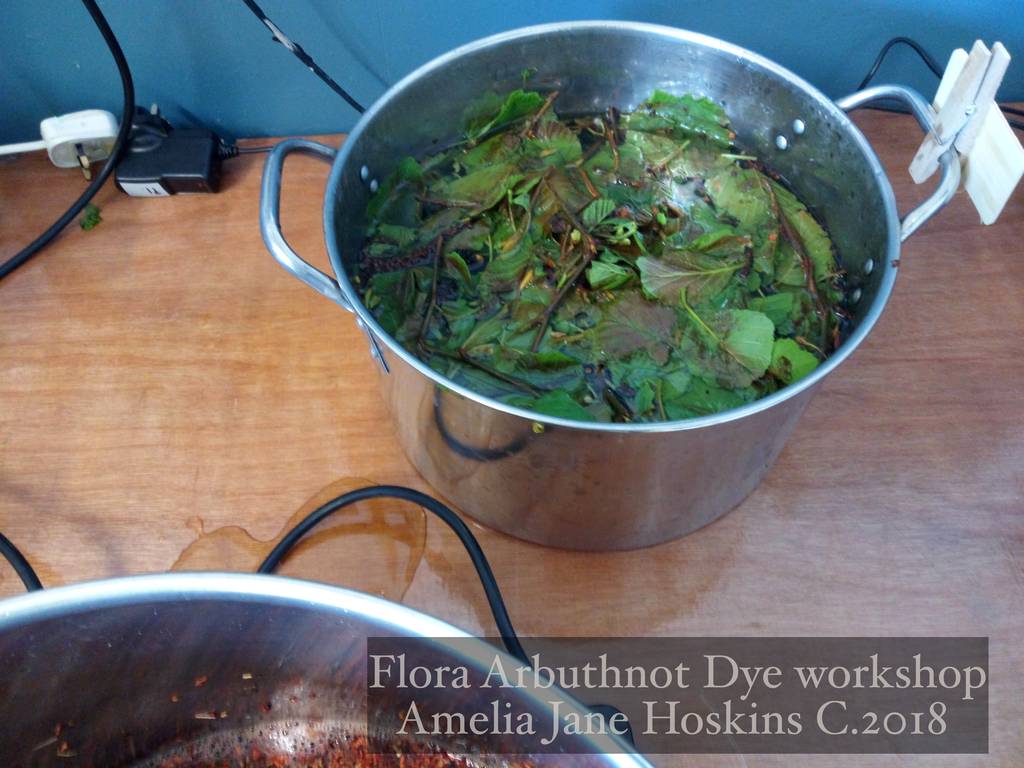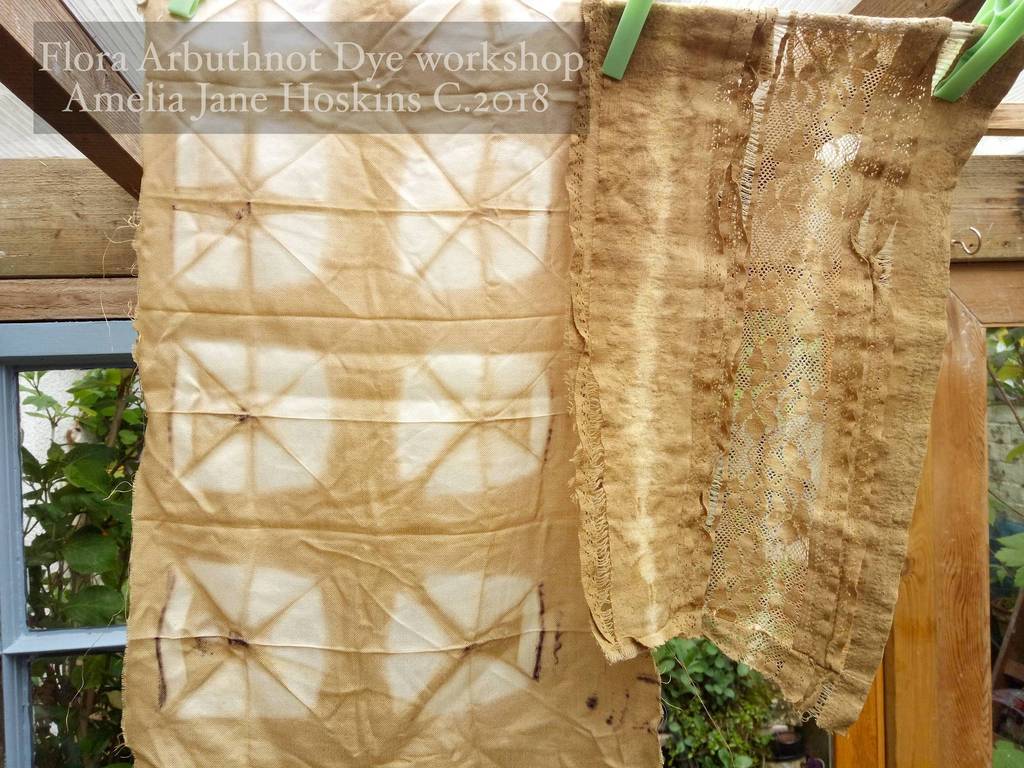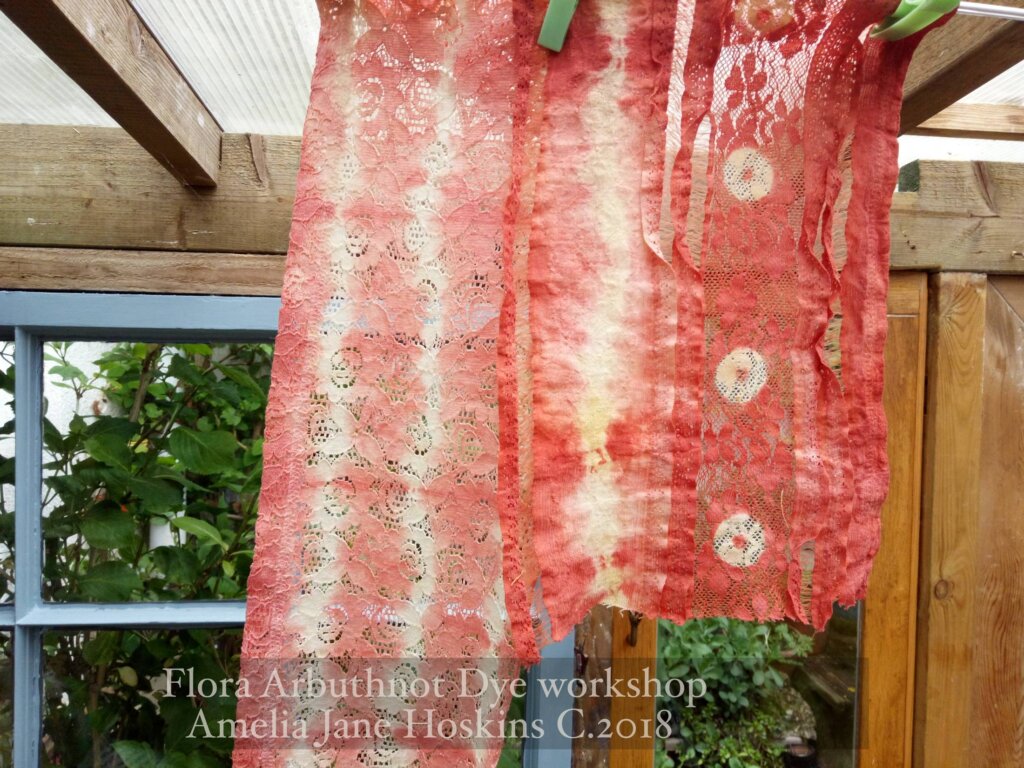22
May
Bundle Dyeing Seeds and Flowers Workshop

Bundle dyed silk samples were created at Flora's Bundle Dye Workshop in Forde Abbey Gardens

Bundle Dyed Silk Samples
Silk and cottons are covered in seeds, petals and powdered roots; then sprayed with vinegar, then folded up into angular folds, before tying up into stringed bundles. Bundles are hung over the side of a large boiling pot of water.
Bright pigment result from steaming seeds (such as Hopi sunflower), petals (such as dahlia) and dried root (such as madder or logwood).
Drying out unwrapped silk bundles
Authors Samples – I chose mostly pink and lilac dyestuffs which I tried to arrange in circular patterns, but this process is completely unpredictable. Next time it would be interesting to make dyestuff arrangements in circular tied bundles or with elastic, similar to tie dye techniques, form snowflake type designs.







